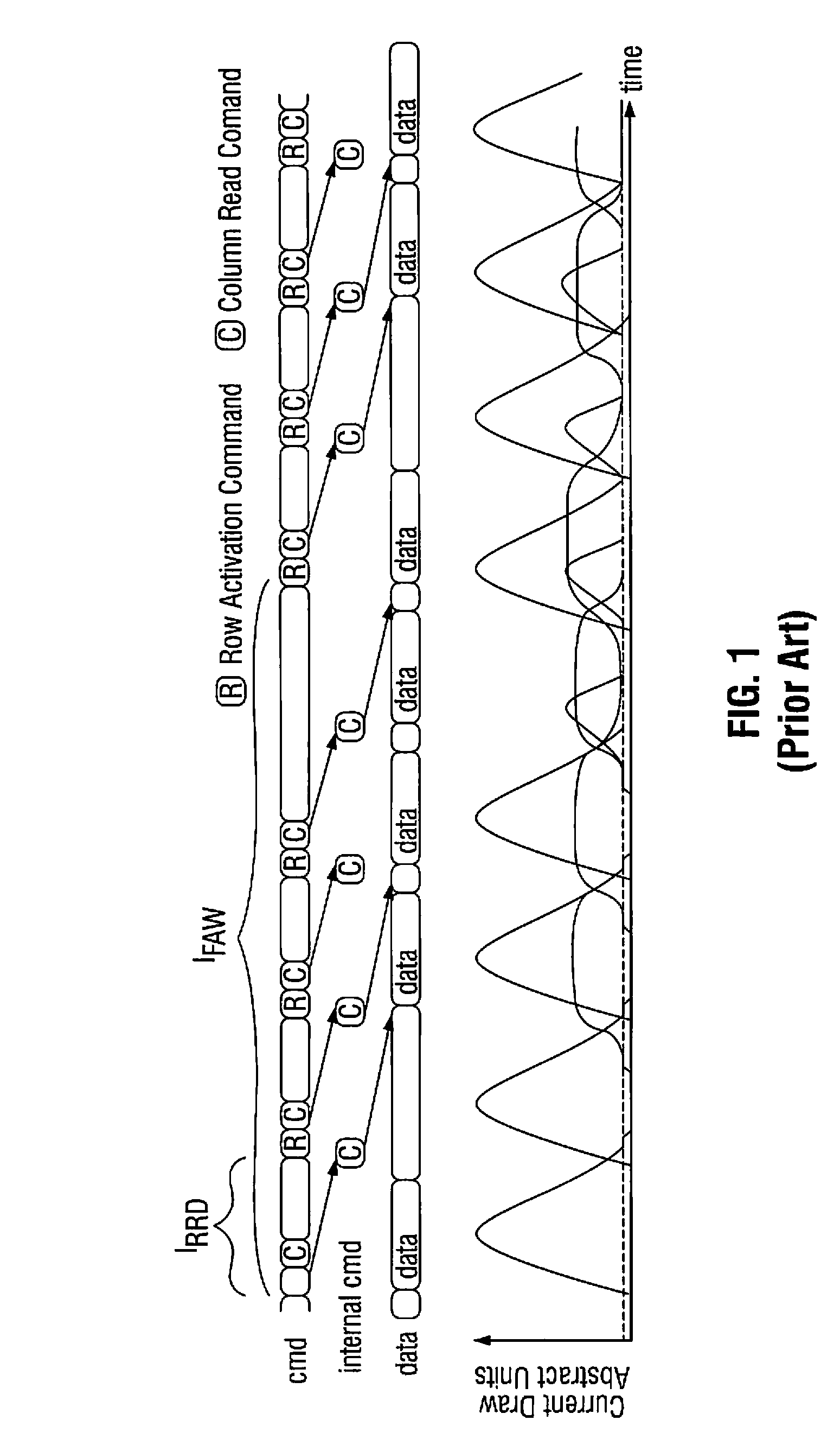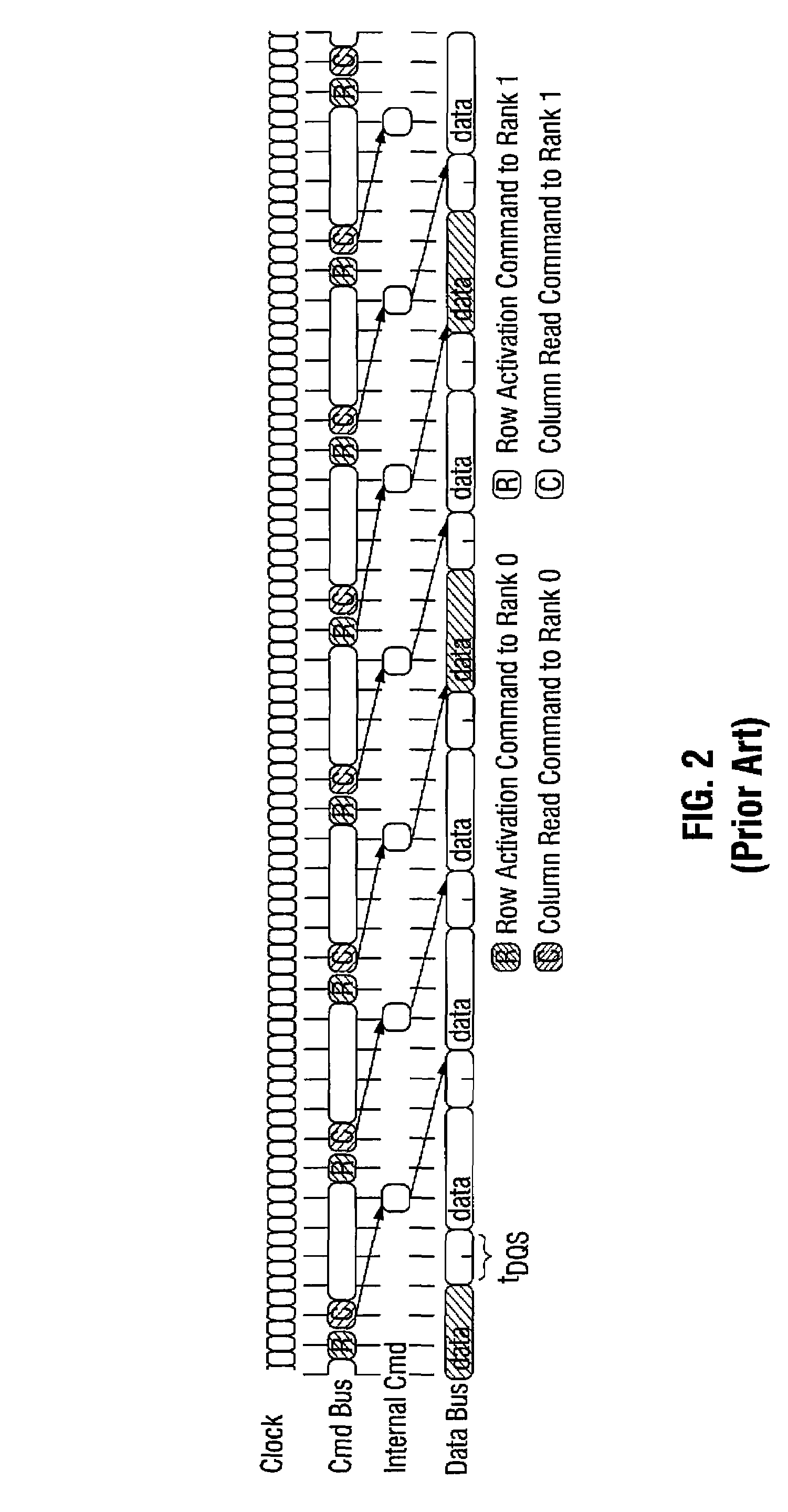System and method for performing multi-rank command scheduling in DDR SDRAM memory systems
a memory system and command scheduling technology, applied in the field of ddr sdram memory systems, can solve the problems of increasing the difficulty of achieving maximum sustainable bandwidth, not addressing the issue of data bus synchronization and power limit constraints in ddrx sdram memory systems, and studies offering specific algorithms, so as to minimize bandwidth impact and optimize bandwidth utilization
- Summary
- Abstract
- Description
- Claims
- Application Information
AI Technical Summary
Benefits of technology
Problems solved by technology
Method used
Image
Examples
Embodiment Construction
[0017]To design a high performance DDRx SDRAM memory controller in accordance with the principles of the present disclosure, the issue of memory access scheduling is first discussed to address the constraints imposed on DDR2 and DDR3 SDRAM memory systems by the data bus synchronization overhead of tRTRS and peak power limiting timing parameters tFAW and tRRD. tRTRS is a timing parameter that represents the data strobe signal hand-off time. The single parameter tRTRS accounts for data strobe post-amble time tRPST and the data strobe pre-amble time tRPRE. The timing parameters tFAW, tRRD, tRPST and tRPRE are industry standard timing parameters that can be found in DRAM device datasheets. Following the discussion of memory access scheduling, the DRAM transaction and command scheduling algorithm according to the present disclosure is described, and the maximum sustainable bandwidth of the algorithm is illustrated.
A. Preliminary Information
A.1. Row Buffer Management Policy
[0018]Previous ...
PUM
 Login to View More
Login to View More Abstract
Description
Claims
Application Information
 Login to View More
Login to View More - R&D
- Intellectual Property
- Life Sciences
- Materials
- Tech Scout
- Unparalleled Data Quality
- Higher Quality Content
- 60% Fewer Hallucinations
Browse by: Latest US Patents, China's latest patents, Technical Efficacy Thesaurus, Application Domain, Technology Topic, Popular Technical Reports.
© 2025 PatSnap. All rights reserved.Legal|Privacy policy|Modern Slavery Act Transparency Statement|Sitemap|About US| Contact US: help@patsnap.com



